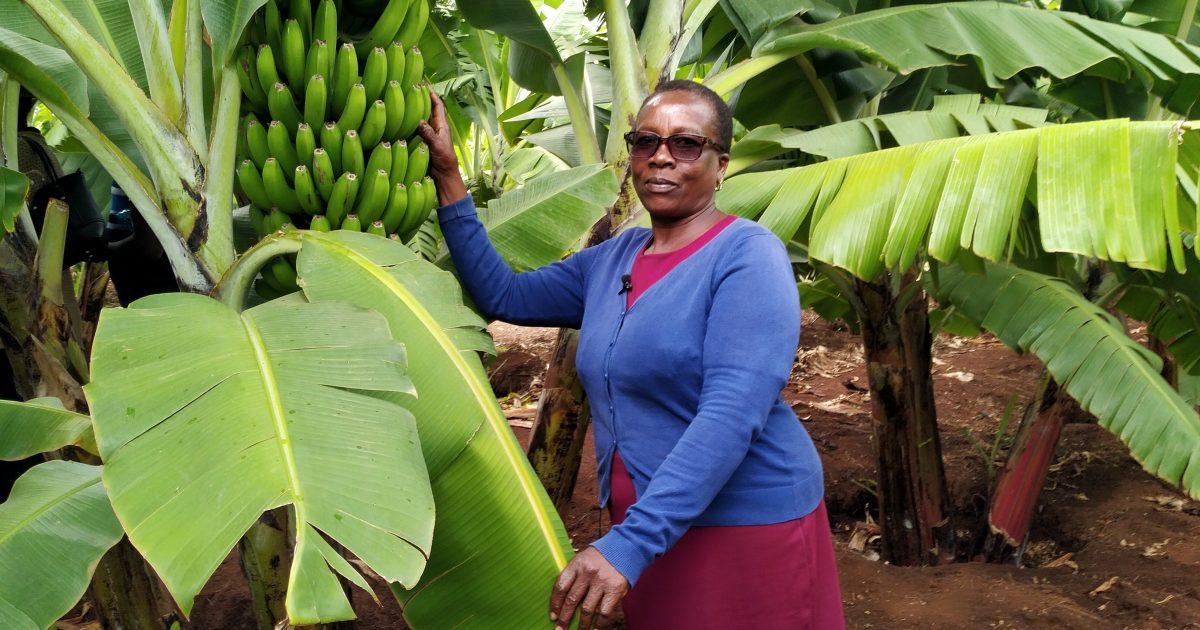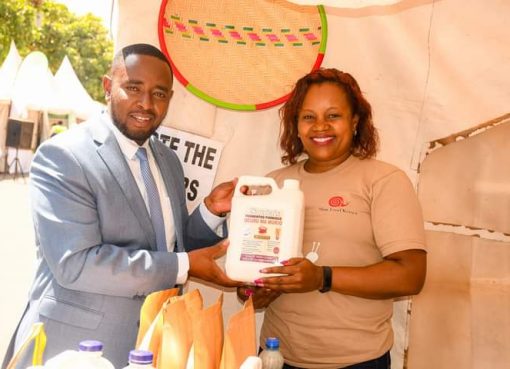Kenya Plant Health Inspectorate Service (KEPHIS) is this week hosting a simulation exercise and training of the Fusarium TR4 banana disease.
Fusarium TR4 is the biggest threat to banana production worldwide, with the potential to cause up to 100 percent yield loss on banana and plantain farms.
Although the pathogen is not currently present in Kenya, the focus of the exercise is for the global phytosanitary community from the COMESA countries in Africa and others to come together in a crucial capacity development exercise on how to prevent the entry of Fusarium TR4 and be prepared, should the threat arise.
Speaking during the opening of the conference, State Department of Agriculture Principal Secretary Dr. Paul Rono said that the African continent needs to know how to mitigate against the challenges of plant pests and diseases which have been identified to cause up to 40 percent reduction in yield if they want to continue producing food.
He noted that threats to plants for instance from pests and diseases, cross boundary transfer of pests through international travel and trade, disruptive human activities and climate change have devastating impacts on agriculture, biodiversity, the economy and international trade while contributing negatively to the efforts towards attaining food security.
“The tropical climate pre-disposes us and other African Countries to these high and new pest incidences through the actual and potential expansion of pest distribution and intensity and changes in pest epidemiology and life cycle”, the PS said in a statement read on his behalf.
Dr. Rono appreciated the close ties between African countries, which he said has translated into tangible outcomes that have not only changed the livelihoods of farmers, but also cushioned us against hard and unprecedented times.
He noted that the implementation of phytosanitary measures to mitigate plant pests so that plants and plant produce exported are acceptable in the international markets is key to Kenya’s economy.
“I am proud to note that Kenya has made significant investments and put in place various initiatives for strengthening phytosanitary systems to support the achievement of a food secure country through strengthening the National Plant Protection Organization (NPPO) – KEPHIS and also equipping our border points for the effective manning against arrival of plant pests and diseases,” the PS said
He explained that it was therefore imperative to exclude Fusarium TR4, especially because banana is a very important crop in Kenya and its devastating effects can greatly impact banana production in Kenya
“We cannot afford to relax when we face a pest that can cause up to 100 percent yield loss in areas of infestation. This workshop is welcome and is key to the revolution of Kenya’s and Africa`s agriculture and trade that will solve emerging issues through a concerted multidisciplinary, multi-state effort”, Dr. Rono said
Food Authority Organization of the UN (FAO) Kenya Hamisi Williams said Fusarium TR4, has the potential to cause significant economic losses, threaten food security, and disrupt local and international trade.
“Banana is one of the leading staple foods in some COMESA member countries and its threat could result in increased food insecurity to a region that is perennially food deficient”, he added noting that the Fusarium TR4 can be spread through various pathways, including international trade.
Due to the biological nature of the fungus and its reproductive structures, Hamisi added that eradicating the pathogen could be an impossible task and therefore called upon the technical team participating in the training activity to take it seriously
“Let us take the exercise as if we are in the real situation of an outbreak so that we can acquire the skills in early detection and response for the pest outbreak. Lack of preparedness could as well be preparation to fail in the event the pest outbreak occurs”, he said.
The FAO rep advocated for strengthened collaboration and partnerships with all the relevant partners and stakeholders including national Governments, regional bodies and donor partners to the very important activity for effective early warning and preparedness.
KEPHIS Managing Director Prof. Theophilus Mutui, in his remarks said that Kenya has had to deal with Fusarium wilt disease, caused by the soil borne fungus Fusarium oxysporum (Foc) and which has been a major constraint to banana production in Kenya.
“We therefore are already grappling with a pest of banana and would be greatly affected should the (Foc) tropical race 4 (TR4) be introduced into Kenya”, he said.
Kenya, he explained, is taking the simulation activity very seriously and that the lessons learnt from the training will be extrapolated to other pests of concern.
This training, Prof. Mutui said will build onto the existing regulatory official control systems which include testing of banana planting material for freedom from Foc TR4 before importation as well as monitoring the material in quarantine status and additionally test where necessary.
As part of the simulation exercise, the participants will visit Jomo Kenyatta International Airport, Kenya’s main entry and exit point as well as the Plant Quarantine Station at Muguga where lab work is done to ascertain the presence of plant diseases in Kenya and regionally . The Quarantine Station is also a COMESA reference laboratory.
Bananas are perennial tropical plants whose fruits are used both for cooking (plantains) and as table fruits. They are a staple food in many of the lower altitude, wetter areas of East Africa and mostly grown as a subsistence crop, although there is much internal and regional trading.
The different varieties of Bananas are also an essential staple crop throughout the Great Lakes region of East Africa and an important source of trade and income. It serves as food, income resource and animal feed in addition to other environmental benefits.
In Kenya, the crop is mainly grown and managed by smallholder farmers with over 200,000 small, land holders growing about 70,000ha with major banana producing counties being Kisii, Meru, Kirinyaga, Taita Taveta, Embu, Bungoma and Murang’a
The crop is of paramount importance in food security and income generation with about 1,000,000 tonnes produced annually. In 2022, bananas production for Kenya was 1.9 million tonnes.
Bananas production in Kenya has also increased from 400,000 tonnes in 1973 to 1.9 million tonnes in 2022 growing at an average annual rate of 7.19 percent.
By Wangari Ndirangu




